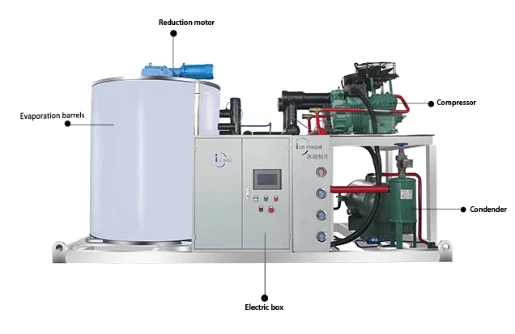May . 08, 2024 14:49
Back to list
Cold Room For Food Storage
A cold room for food storage is an essential facility that helps maintain food quality and safety by keeping products at a consistently low temperature. These rooms are integral to the food industry, helping to preserve perishable items like fruits, vegetables, meats, dairy products, and more. In this article, we will explore the different types of cold rooms, the benefits they offer, how they work, and key considerations when setting up a cold room.
Types of Cold Rooms
Cold rooms come in various types to cater to different storage needs:
Walk-in Cold Rooms: These are large, insulated rooms designed to store food on shelves or racks. Walk-in cold rooms are suitable for restaurants, supermarkets, and warehouses.
2. Modular Cold Rooms: These rooms are prefabricated and can be easily assembled on-site. They are versatile and can be customized according to specific storage needs.
3. Blast Freezers: These cold rooms quickly freeze products to preserve freshness. They are commonly used for seafood, meat, and other highly perishable items.
4. Ultra-Low Temperature Cold Rooms: These cold rooms maintain extremely low temperatures, suitable for storing frozen goods and pharmaceuticals.-
Benefits of Cold Rooms
Cold rooms offer several advantages for businesses in the food industry:
1. Extended Shelf Life: By keeping products at a consistent, low temperature, cold rooms help extend the shelf life of perishable goods.
2. Reduced Food Waste: Proper storage minimizes spoilage, leading to less waste and lower costs.
3. Compliance with Food Safety Regulations: Cold rooms help businesses meet regulatory requirements for food storage, ensuring safety for consumers.
4. Enhanced Food Quality: Products stored in cold rooms retain their nutritional value, taste, and texture, providing higher-quality offerings to customers.-
How Cold Rooms Work
Cold rooms function by using refrigeration systems to maintain low temperatures. The key components include:
1. Insulation: Cold rooms are constructed with high-quality insulation to prevent heat from entering the room.
2. Refrigeration System: This includes compressors, condensers, and evaporators that work together to cool the room.
3. Temperature Control: Cold rooms are equipped with thermostats and sensors to maintain a consistent temperature.
4. Ventilation: Proper ventilation ensures that the cold room remains at the desired temperature and prevents moisture buildup.-
Key Considerations When Setting Up a Cold Room
When establishing a cold room for food storage, keep the following factors in mind:
1. Size and Capacity: Determine the size and capacity needed based on the volume and type of food you plan to store.
2. Location: Choose a suitable location that is easily accessible and away from heat sources.
3. Insulation: High-quality insulation is crucial to maintain the desired temperature and energy efficiency.
4. Refrigeration System: Select a reliable refrigeration system that suits your storage requirements.
5. Temperature Monitoring: Implement a monitoring system to track and maintain the appropriate temperature levels.
6. Safety Measures: Ensure the cold room has safety features such as alarms, emergency exits, and fire suppression systems.
7. Maintenance: Regular maintenance of the cold room and its equipment is essential to ensure optimal performance and longevity.
Conclusion
Cold rooms play a vital role in the food storage process, ensuring that products remain fresh, safe, and high-quality for longer periods. By understanding the different types of cold rooms, their benefits, and the key considerations when setting them up, businesses can effectively manage their storage needs and maintain compliance with food safety regulations. Whether you are running a small restaurant or a large warehouse, investing in a well-designed cold room is a smart choice for preserving the integrity of your products.
Prev:
Latest news
Related PRODUCTS
Copyright © 2025 Shijiazhuang Xuexiang Refrigeration Euquipment Co.,Ltd. All Rights Reserved. Sitemap | Privacy Policy






